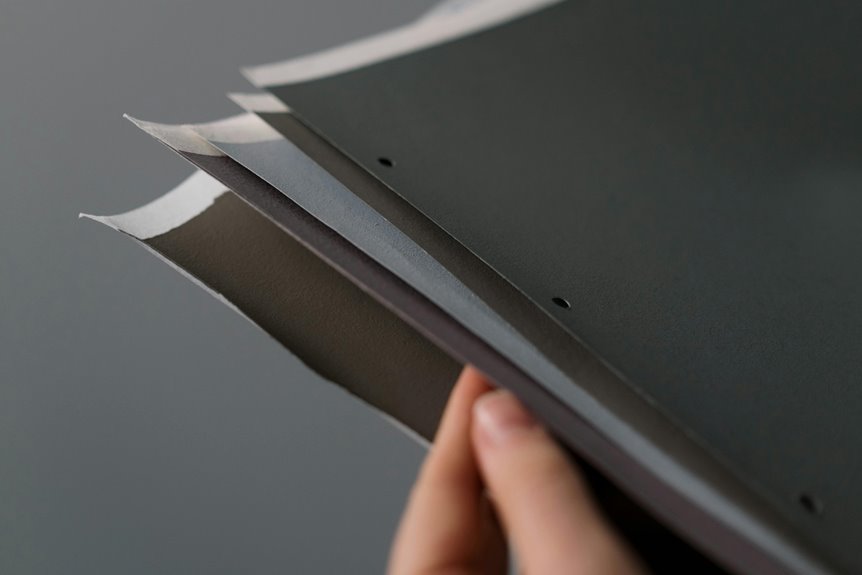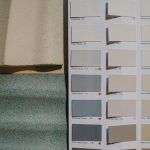When deciding between Kevlar and fiberglass, consider your project’s needs for strength, weight, durability, and cost. Kevlar is lighter and excels in impact resistance and toughness but costs more and needs special handling. Fiberglass is heavier, less expensive, and works well in moisture-prone environments with good compressive strength. If you prioritize weight savings and protection, Kevlar is ideal; for versatility and budget-friendliness, fiberglass fits better. Explore their unique traits to pick the best fit for your application.
Table of Contents
Key Takeaways
- Kevlar is lightweight and flexible, ideal for impact resistance and applications requiring high toughness and fatigue resistance.
- Fiberglass offers excellent compressive strength, moisture resistance, and is more cost-effective and easier to fabricate.
- Choose Kevlar for weight-sensitive uses like aerospace, military gear, and sports equipment requiring durability and toughness.
- Fiberglass suits environments needing water resistance and structural reinforcement, such as boat building, construction, and automotive parts.
- Cost and fabrication ease favor fiberglass, while Kevlar demands specialized handling but provides superior strength and durability.
Understanding the Composition and Structure of Kevlar and Fiberglass
Materials like Kevlar and fiberglass have unique compositions and structures that define their strengths and uses.
Kevlar is a synthetic fiber made from long chains of poly-paraphenylene terephthalamide molecules. These chains align tightly, creating strong hydrogen bonds that give Kevlar its incredible tensile strength and heat resistance.
Kevlar’s tightly aligned molecular chains form strong hydrogen bonds, resulting in exceptional tensile strength and heat resistance.
Fiberglass, on the other hand, is composed of fine glass fibers woven into a fabric. These fibers, made from molten glass, harden into a rigid matrix when combined with resin, providing excellent stiffness and impact resistance.
When you handle Kevlar, you experience a lightweight, flexible material, while fiberglass feels more rigid and brittle.
Understanding these fundamental differences helps you choose the right material based on your project’s needs, as each performs uniquely under various conditions.
Comparing Strength and Durability Characteristics
Although both Kevlar and fiberglass offer impressive strength, their durability varies considerably depending on the application.
You’ll find Kevlar excels in impact resistance and tensile strength, making it ideal for protective gear and high-stress environments. It resists abrasion and fatigue better, so it holds up well under repeated stress.
Fiberglass, on the other hand, offers excellent compressive strength and is more resistant to moisture and chemicals, which makes it a great choice for marine and outdoor applications.
However, fiberglass can be more brittle and prone to cracking under heavy impact.
When choosing between them, consider the type of forces your material will face and the environment it’ll endure. This way, you can pick the composite that balances strength and durability for your specific needs.
Weight Considerations in Composite Materials
When deciding between Kevlar and fiberglass, you’ll also want to factor in weight, as it can greatly impact performance and handling.
Kevlar is significantly lighter than fiberglass, making it an excellent choice if you need a material that reduces overall weight without compromising strength. This weight advantage can improve speed and maneuverability in applications like automotive or sporting equipment.
Fiberglass, while heavier, offers a balance of cost and durability but adds more bulk, which might affect your design’s efficiency. If minimizing weight is your priority, Kevlar stands out, especially when every gram counts.
However, if weight isn’t the critical factor, fiberglass could still serve your needs effectively. Your choice depends on how much you value weight savings versus other material properties.
Impact Resistance and Safety Features
When choosing between Kevlar and fiberglass, you need to take into account how each handles impact resistance and safety.
Kevlar usually offers superior impact strength, which can be vital in high-risk situations.
Let’s look at the safety performance metrics to see which material keeps you better protected.
Impact Strength Comparison
Since you’re comparing Kevlar and fiberglass for impact strength, you need to understand how each material handles sudden forces and protects against damage.
Kevlar excels in absorbing and distributing energy because of its unique molecular structure, making it highly resistant to penetration and impact. You’ll find Kevlar often used in bulletproof vests and helmets for this reason.
Fiberglass, while strong and rigid, tends to shatter or crack under high-impact stress rather than flex or absorb energy. This means it mightn’t protect as well against sharp or sudden blows.
If your priority is a material that can endure repeated impacts without catastrophic failure, Kevlar is usually the better choice. However, fiberglass can still perform well in applications with moderate impact where stiffness is key.
Safety Performance Metrics
Safety performance metrics play an essential role in deciding between Kevlar and fiberglass, especially if your focus is on impact resistance and protective features. Kevlar offers superior energy absorption, making it ideal for protective gear and bulletproof applications. Fiberglass, while strong, tends to shatter under high impact, which might reduce safety in certain uses. When evaluating these materials, consider factors like tensile strength, impact resistance, and weight.
| Metric | Kevlar | Fiberglass |
|---|---|---|
| Impact Resistance | High (absorbs and disperses energy) | Moderate (prone to cracking) |
| Tensile Strength | Very high | High |
| Weight | Lightweight | Heavier |
Choose Kevlar if safety under extreme impact is your priority; fiberglass fits well where cost and rigidity matter more.
Cost Analysis and Budget Implications
Although both Kevlar and fiberglass offer unique advantages, understanding their cost differences is essential for making informed budget decisions.
Kevlar generally comes at a higher price due to its superior strength and lightweight properties, which can impact your upfront material expenses.
Fiberglass, on the other hand, tends to be more affordable and widely available, making it a popular choice for budget-conscious projects.
Consider these key budget implications:
- Material cost: Kevlar is considerably more expensive per pound than fiberglass.
- Long-term value: Kevlar’s durability may reduce replacement and maintenance costs.
- Project scale: For large volumes, fiberglass offers cost savings without compromising basic performance.
Fabrication Processes and Ease of Use
When working with Kevlar and fiberglass, you’ll find their fabrication processes differ considerably, affecting how easily you can handle each material. Fiberglass is more user-friendly, allowing for easy cutting and shaping with common tools. Kevlar, however, requires specialized equipment due to its toughness and tendency to fray. Additionally, Kevlar needs careful layering to maintain strength, while fiberglass is more forgiving in layup. Your choice depends on your project’s complexity and your skill level.
| Aspect | Kevlar | Fiberglass |
|---|---|---|
| Cutting Tools | Specialized (e.g., rotary blades) | Basic (scissors, knives) |
| Layup Complexity | High (requires precision) | Moderate (forgiving process) |
| Handling Difficulty | Challenging (frays easily) | Easier (stable fibers) |
| Curing Time | Longer | Shorter |
| Safety Precautions | High (dust and fibers) | Moderate |
Common Applications for Kevlar
Understanding the unique fabrication requirements of Kevlar helps explain why it’s chosen for specific applications. You’ll find Kevlar used where high tensile strength, impact resistance, and lightweight properties are critical.
Kevlar stands out for its high tensile strength, impact resistance, and lightweight nature in specialized applications.
Its ability to absorb energy while maintaining durability makes it ideal in demanding environments. Here are common applications where Kevlar truly excels:
- Body armor and protective gear: Kevlar’s high strength-to-weight ratio provides excellent ballistic protection without restricting movement.
- Aerospace components: You’ll see Kevlar in aircraft parts requiring toughness and resistance to fatigue.
- Sports equipment: It’s popular in helmets, racing sails, and bicycle tires where durability and weight savings matter.
If your project needs a material that can withstand extreme conditions while staying lightweight, Kevlar should be at the top of your list.
Common Applications for Fiberglass
Fiberglass offers versatility and strength that suit a wide range of applications you might encounter.
You’ll often find it used in boat building because it resists water and corrosion while staying lightweight. It’s also common in automotive parts, helping reduce vehicle weight and improve fuel efficiency.
In construction, fiberglass reinforces structures like roofing, insulation, and wall panels, thanks to its durability and thermal properties. You might see it in sports equipment, such as hockey sticks and fishing rods, where flexibility and strength matter.
Additionally, fiberglass is popular in wind turbine blades and storage tanks, where its corrosion resistance extends lifespan.
When you need a material that balances strength, weight, and cost-effectiveness, fiberglass often fits the bill perfectly.
Frequently Asked Questions
How Do Kevlar and Fiberglass Respond to UV Exposure Over Time?
You’ll find Kevlar degrades faster under UV exposure, weakening its fibers over time. Fiberglass resists UV damage better, maintaining strength longer. So, if UV exposure’s a concern, fiberglass might serve you more reliably outdoors.
Can Kevlar or Fiberglass Be Recycled Effectively?
Recycling Kevlar and fiberglass is tricky because they’re tough and bonded with resins. You’ll find limited options, mainly downcycling or specialized processes. Don’t expect easy recycling, but some facilities can handle them with advanced tech.
What Are the Environmental Impacts of Producing Kevlar Vs Fiberglass?
Producing these materials paints different environmental pictures: Kevlar’s energy-hungry process drains resources, while fiberglass releases more pollutants. You’ll want to weigh these impacts carefully when choosing what’s best for your project and the planet.
Are There Any Health Risks When Handling Kevlar or Fiberglass Fibers?
Yes, you should avoid inhaling Kevlar or fiberglass fibers since they can irritate your lungs and skin. Wearing protective gear like gloves, masks, and goggles helps minimize these health risks while handling these materials safely.
How Do Kevlar and Fiberglass Perform in Extreme Temperature Conditions?
When push comes to shove, you’ll find Kevlar resists heat better, handling high temps without losing strength. Fiberglass tolerates cold well but can weaken in extreme heat, so choose based on your project’s temperature demands.







